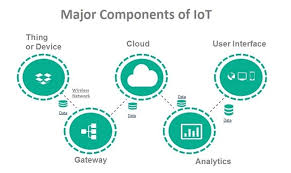Epilepsy is the fourth most common neurological disorder
affecting nearly 65 million people worldwide. The seizures or ‘fits’ as is
commonly known, arise due to unusual electrical activity in the brain and is
the chief symptom of epilepsy.
Neither dependent
on age or gender, the onset of the seizure is unpredictable without a set
pattern of frequency of occurrence or severity, often posing a challenge to the
caregiver.
Although
epilepsy can be related to previous brain injuries or genetic factors,
neurologists have found unprovoked, recurrent seizures in healthy individuals
too.
How and why
these seizures occur remains a mystery. However, research has found that the
source of seizures is within the brain. In other words, the brain itself is the
generator of epilepsy.
If the origins
are within the brain, then, are there any fingerprints that can be detected?
Does the brain offer tell-tale signs which can be mapped to predict the
tendency of epilepsy?
Seeking answers
to these questions, a team of interdisciplinary researchers conducted a study
to peep inside epileptic brains. The results indicate that there exist
independent neural networks that can carry disease-sensitive information about
the anomaly.
With the help of
machine learning models and artificial intelligence, researchers were able to
detect and reveal the hidden patterns.
“Epilepsy is not
a disorder but the manifesting of something from within the brain’s electrical
activity. Interestingly, each one of us has the neural map of epilepsy within
our brain. It is only when the network gets fired and manifests externally, in
a recurrent manner, it becomes disorder or epilepsy,” said Tapan Kumar
Gandhi, lead researcher of the study from Indian Institute of Technology-Delhi,
while speaking to India Science Wire.
The usual
diagnosing tool for epilepsy is by EEG (electroencephalogram) readings of
epileptic patterns and visible symptoms like convulsions, loss of consciousness
or sensory disturbances.
Existing studies
reveal specific patterns that represent synchronous activities of sensory,
auditory, cognitive and other functions. These activities are indicated by the
change in blood flow to the brain and seen as BOLD signals or changes in the
Blood-Oxygen -Level-Dependent output.
Recent
developments in Magnetic Resonance Imaging or MRI help picture these activities
in the brain and detect the cause of seizures such as a lesion or scar.
However, MRI is not very useful when a seizure flares up. Whereas, functional
MRI — another scanning method— can record regional interactions in the brain
when a particular task is being performed.
In 1995, Indian
researchers had found that the brain shows prominent neural network connections
even in its resting state. Termed as resting-state functional MRI or rsfMRI,
the images from this scanning indicate neural patterns in an individual’s brain
even when no action is performed.
In the present
study, the team utilized rsfMRI technique and performed brain scans on
individuals with Temporal Lobe Epilepsy (TLE), which is the most common form of
epilepsy.
“We hypothesised
that there could be ‘disease-specific networks’ in epilepsy prone brain that
can be identified with the help of the machine learning model,” said Gandhi.
Machine learning
involves artificial intelligence to read live data instead of preprogramed
information. Such a building block of a machine is analogous to a neuron cell
in the brain.
Researchers used
a tool called Support Vector Machine (SVM) to deal with the complex and
non-linear data obtained from the scans. By using another algorithm called
Elastic- net-based ranking, the relevant features of the neuroimaging data were
extracted. The signals were integrated to reveal the patterns.
The team
conducted a pilot study on 132 subjects — 42 with epilepsy the rest healthy
individuals. Parameters like age, gender, history of epilepsy, genetic
predisposition, incidents of injuries, medications and more, were taken into
account. The epilepsy patients underwent three rsfMRI while those in the
healthy group were scanned once.
In all, 88
independent components or networks were obtained from the whole- brain imaging
data and fed as input to the SVM. From the patterns, top 10 strong networks were
correlated with clinical features using another standard method called
Pearson’s Correlation to generate the rsfMRI epileptic neural networks.
From the pattern
inputs, the SVM could identify epileptic individuals to an accuracy of 97.5 per
cent and specific lobes in the brain responsible for the condition. The model
also revealed correlations such as the age of onset, frequency of seizures, or
duration of illness.
By this,
researchers concluded that the independently derived rsfMRI contains
epilepsy-related networks. “Our research establishes that with the help of
machine learning methods, we can identify these networks, as we had
hypothesised. Increased strength in these networks indicates the possibility of
a progressing Temporal Lobe Epilepsy,” explained Gandhi.
The team
included Rose Dawn Bharath, Sujas Bharadwaj, Sanjib Sinha,Kenchaiah Raghavendra,
Ravindranadh C Mundlamuri, Arivazhagan Arimappamagan, Malla Bhaskara Rao,
Jamuna Rajeshwaran, Kandavel Thennarasu and Parthasarathy Satishchandra
(National Institute of Mental Health and Neurosciences, Bengaluru); Tapan K
Gandhi and Jeetu Raj (IIT, Delhi); Rajanikant Panda (Universitè de Liège,
Belgium); Ganne Chaitanya (Thomas Jefferson University, USA) and Kaushik K.
Majumdar (Indian Statistical Institute, Bengaluru). The study results have been
published in journal European Radiology.
















